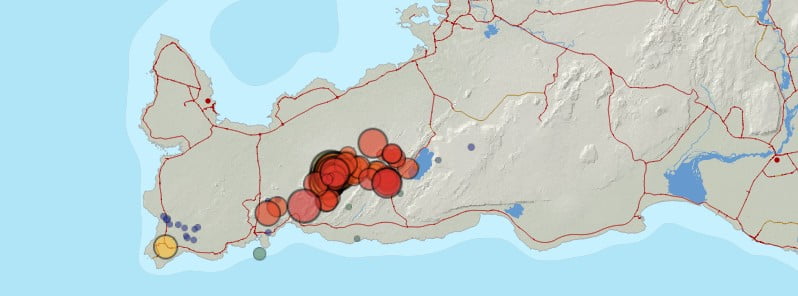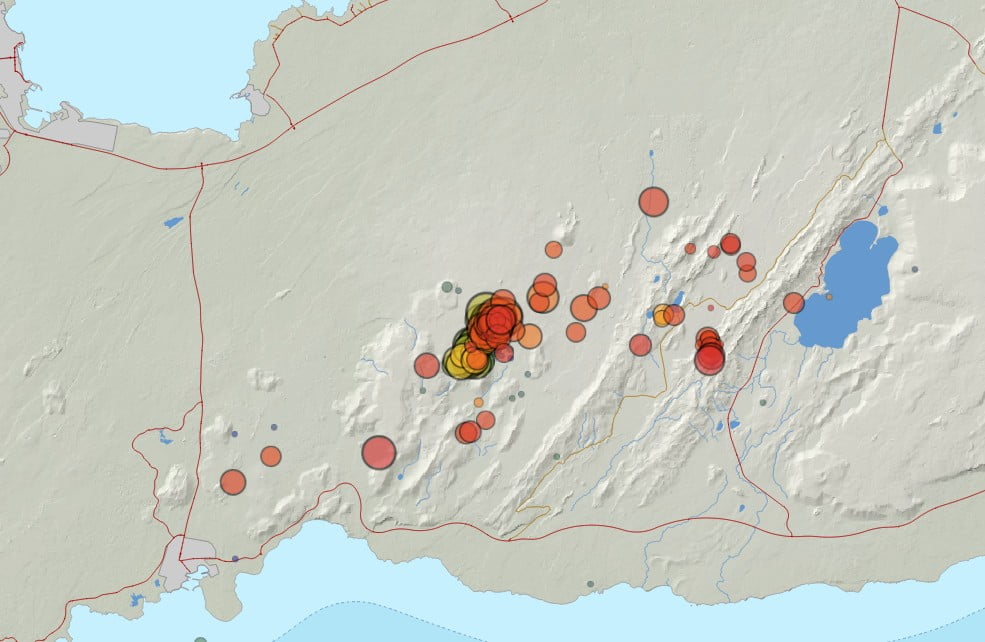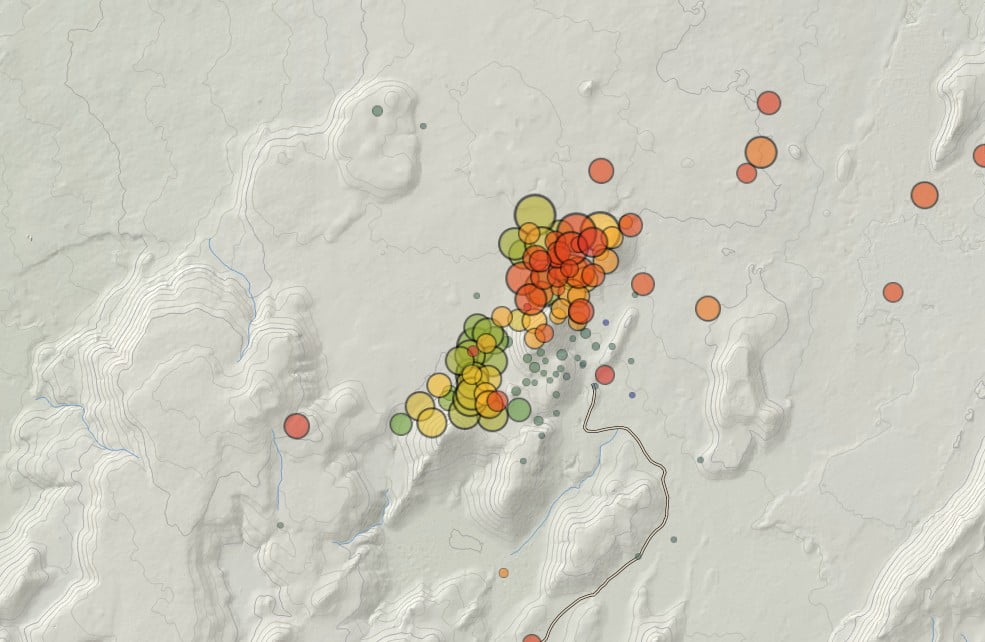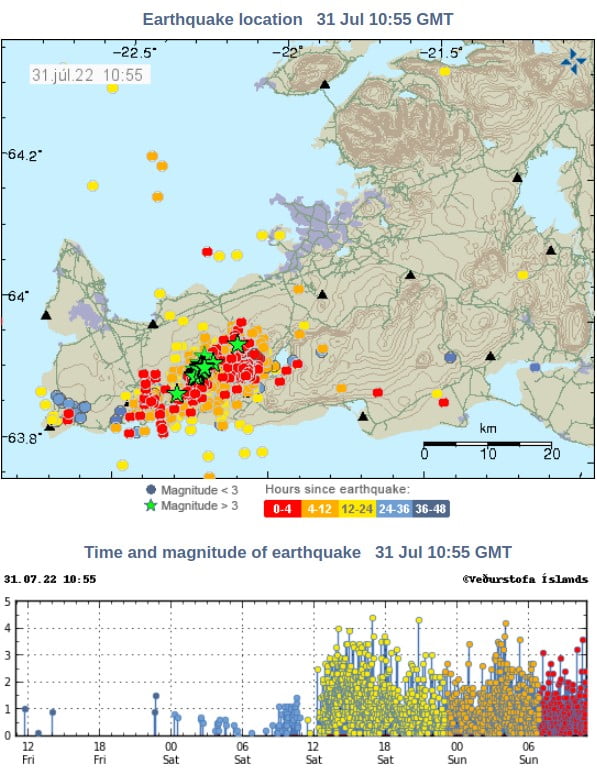Powerful earthquake swarm near Fagradalsfjall volcano, Aviation Color Code raised to Yellow, Iceland

A powerful earthquake swarm started at Krísuvík volcano, just northeast of Fagradalsfjall and a short distance north of Fagradalshraun lava field, on July 30, 2022, at a depth of about 5 to 7 km (3 – 4 miles). As a result, the Icelandic Meteorological Office (IMO) raised the Aviation Color Code for the volcano to Yellow. The last eruption at this volcano took place in 2021.
The largest earthquakes so far were M4.0 at 14:03 UTC, felt in Reykjavik and all the way up to Borgarnesm, followed by M4.3 at 20:48 UTC and M4.2 at 04:06 UTC.
Around 1 800 earthquakes have been registered by midnight UTC, and another 600 from midnight to 04:50 UTC today.
IMO believes that these quakes are due to a magma flow that is taking place northeast of Fagradalsfjall.1


While no rockslides and landslides have been registered so far, stronger earthquakes could trigger them, IMO said, advising residents to be careful on steep slopes, near steep sea cliffs and to avoid areas prone to landslides.
Einar Hjörleifsson, an expert in natural hazards at IMO, said the activity may be a precursor to another volcanic eruption. Einar noted that the seismic activity currently underway on Reykjanes is reminiscent of that which occurred in the area around the end of 2021. But in that instance, there was no eruption, as the lava did not rise to the surface.2
According to Jón Frímann Jónsson of Iceland Geology, the most likely outcome of this swarm is also an eruption, which, judging by the magnitude of harmonic tremor, could be stronger than the one in 2021.3
While it’s currently hard to predict when the eruption will start, one indication is the depth of the earthquakes so IMO is paying close attention to any change, particularly if they are getting more shallow which would be an indication that magma is pushing up.

The last eruption at this volcano started on March 19, 2021, after more than 50 000 earthquakes registered since February 24, and lasted to September 18, 2021 (VEI 0).
Here’s a selection of our articles covering it:
Geological summary
The Krýsuvík-Trölladyngja volcanic system is described by the Catalogue of Icelandic Volcanoes as an approximately 50 km (31 miles) long composite fissure swarm trending about N38°E, including a 30 km (18 miles) long swarm of fissures, with no central volcano.
It is one of the volcanic systems arranged en-echelon along the Reykjanes Peninsula west of Kleifarvatn lake. The Fagradalsfjall and Krýsuvík fissure swarms are considered splits or secondary swarms of the Krýsuvík–Trölladyngja volcanic system.
Small shield volcanoes have produced a large portion of the erupted volume within the system. Several eruptions have taken place since the settlement of Iceland, including the eruption of a large basaltic lava flow from the Ogmundargigar crater row around the 12th century.4
References:
1 Jarðskjálftahrina á Reykjanesi – IMO – July 30, 2022
2 Uncertainty Phase Declared as Earthquakes Rock Reykjanes Peninsula – Iceland Review – July 30, 2022
3 Massive earthquake swarm in Krýsuvík-Trölladyngja volcano – Iceland Geology – July 30, 2022
4 Krysuvik – Geological summary – GVP
Featured image: Earthquake swarm in Reykjanes peninsula July 30 – 31, 2022. Credit: IMO, The Watchers

Commenting rules and guidelines
We value the thoughts and opinions of our readers and welcome healthy discussions on our website. In order to maintain a respectful and positive community, we ask that all commenters follow these rules.